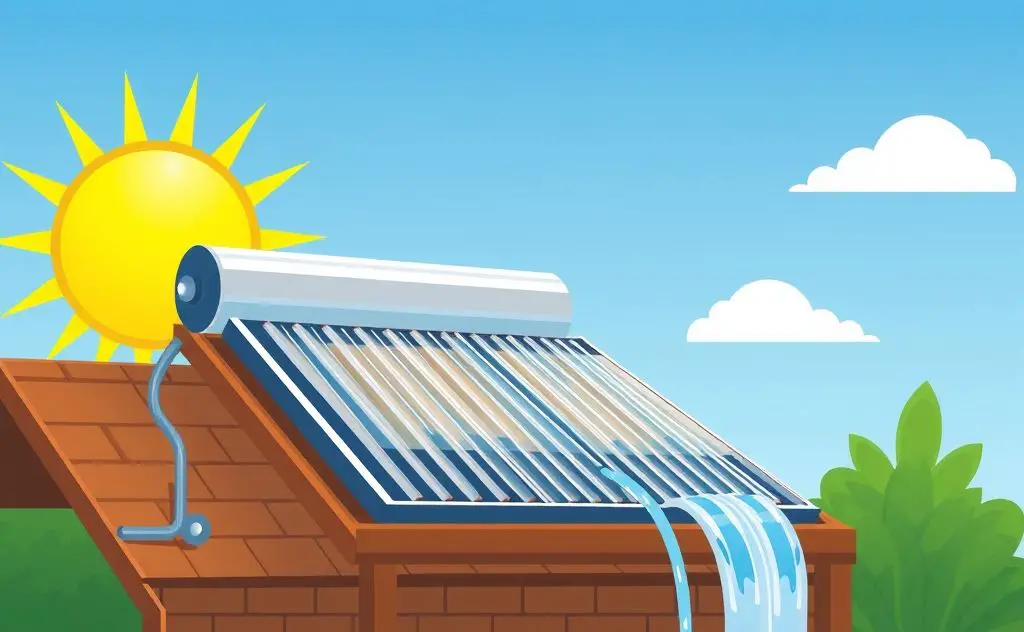Key components of solar water heaters: Solar water heaters typically consist of solar collectors, which capture sunlight; a storage tank, where heated water is stored; an insulation layer to minimize heat loss; a pump or circulation system to move water; and a controller to manage the system’s operation, ensuring efficient heating and usage of solar energy.
Solar water heaters harness the sun’s energy to provide hot water for homes, pools, and industrial processes. Understanding their components helps maximize efficiency and longevity. This guide breaks down every critical part.

Active vs. Passive Solar Water Heating Systems
Solar water heaters come in two main types: active and passive. Active systems use pumps to circulate water or heat transfer fluid. Passive systems rely on gravity and natural convection.
Active System Components
- Circulating pumps
- Automatic controls
- Heat exchangers
- Backup heating elements
Passive System Components
- Thermosiphon tanks
- Integral collector storage
- Gravity-fed piping
Active systems like those with recirculation pumps work better in cold climates. Passive systems cost less but may freeze in winter.

Core Components of Solar Water Heaters
1. Solar Collectors
Collectors capture sunlight and convert it to heat. Five main types exist:
| Collector Type | Best For | Efficiency |
|---|---|---|
| Glazed flat-plate | Domestic hot water | High |
| Unglazed flat-plate | Pool heating | Medium |
| Evacuated tube | Cold climates | Very high |
| Parabolic-trough | Industrial use | Highest |
| Integral collector storage | Warm climates | Low |
How Collectors Work
Glazed collectors use copper pipes under glass with black absorber plates. Evacuated tube models provide better insulation with vacuum-sealed glass tubes. According to U.S. Department of Energy, properly sized collectors can meet 50-80% of a home’s hot water needs.
2. Storage Tanks
Solar storage tanks hold heated water until needed. Key features include:
- Extra insulation (minimum R-24)
- Corrosion-resistant materials
- Heat exchanger ports
- Backup heating connections
Most systems use a two-tank configuration where solar preheats water before it enters a conventional heater. Single-tank systems require careful stratification to avoid reheating already hot water.
3. Heat Transfer Fluids
Indirect systems use antifreeze solutions instead of water:
- Propylene glycol – Non-toxic, food-safe
- Ethylene glycol – More efficient but toxic
- Water – Only in freeze-proof climates
4. Heat Exchangers
These transfer heat from solar fluid to potable water without mixing. Common types:
- Internal coil – Inside storage tank
- External plate – Separate unit
- Tube-in-tube – Concentric piping
5. Control Systems
Smart controllers manage:
- Pump operation
- Temperature differentials
- Freeze protection
- Backup heater activation
Backup Heating Options
Solar systems need supplemental heat for cloudy days. Common backups:
Electric Elements
Most storage tanks include electric heating elements. Consider pairing with a tankless water heater for maximum efficiency.
Gas Heaters
Natural gas or propane heaters provide reliable backup. According to SolarReviews, gas backups work best in areas with frequent clouds.
Maintenance Requirements
Proper care extends system life:
- Annual fluid checks
- Collector cleaning every 6 months
- Anode rod inspection
- Pump maintenance
Systems in hard water areas may need descaling treatments to prevent mineral buildup.
